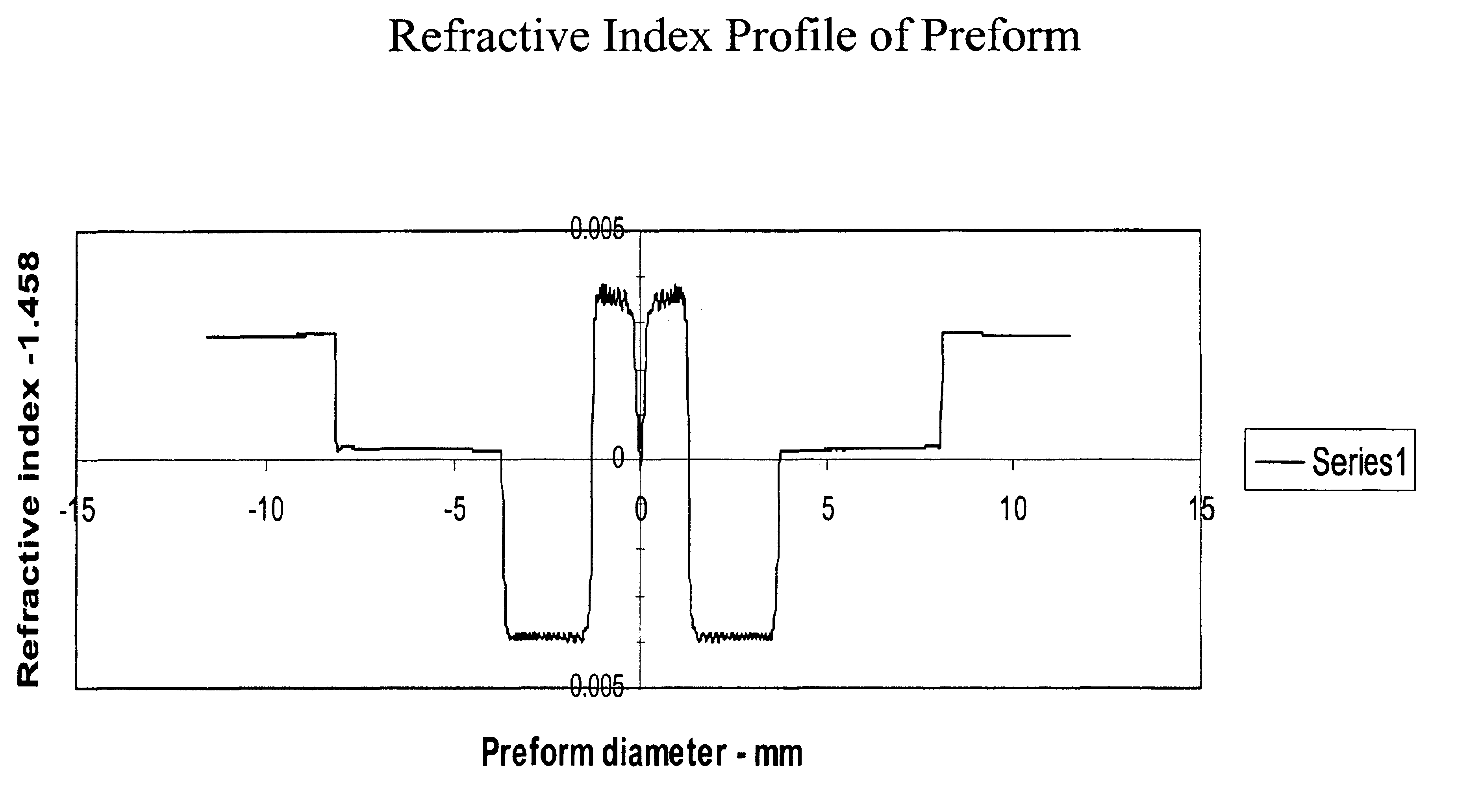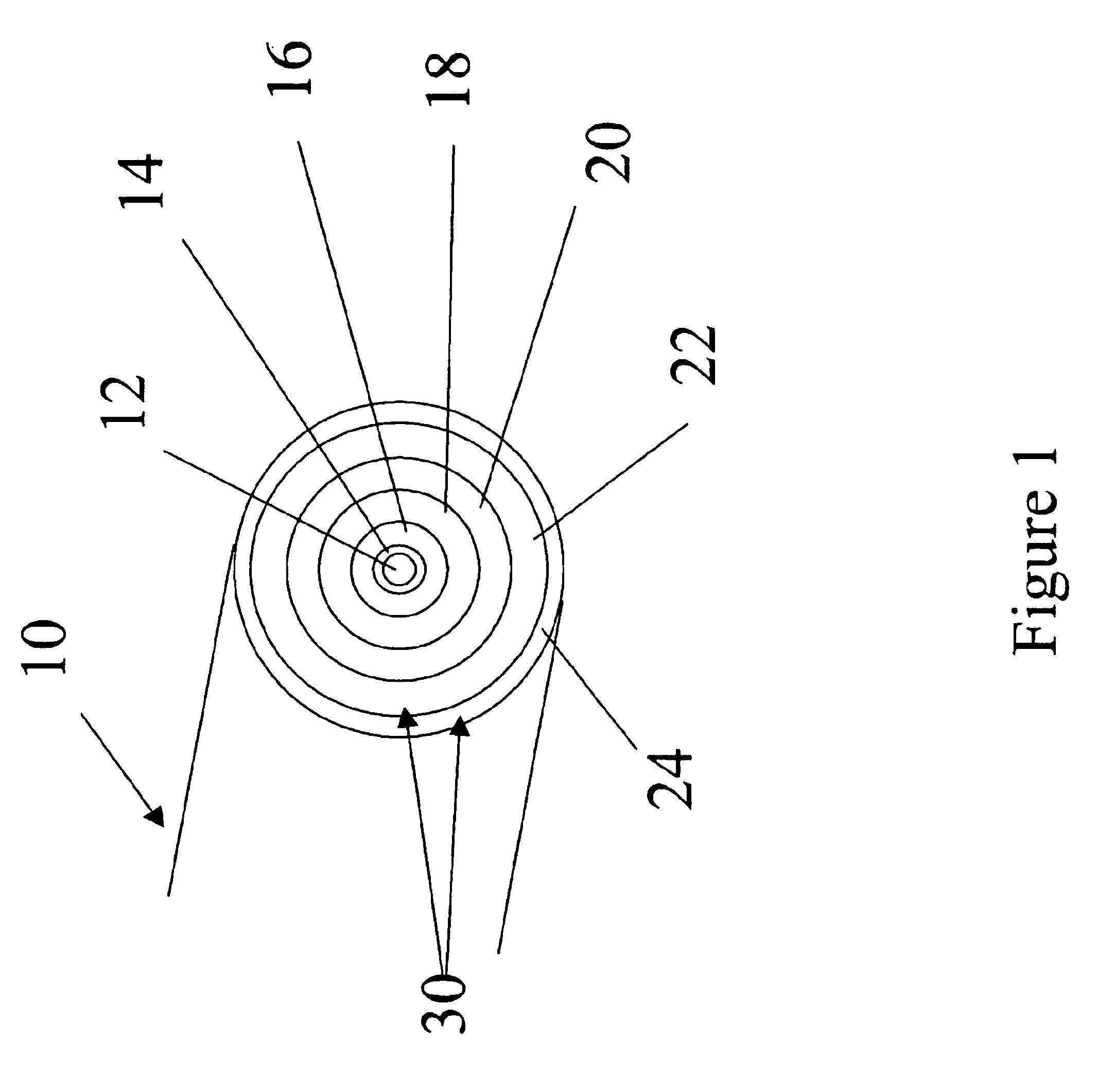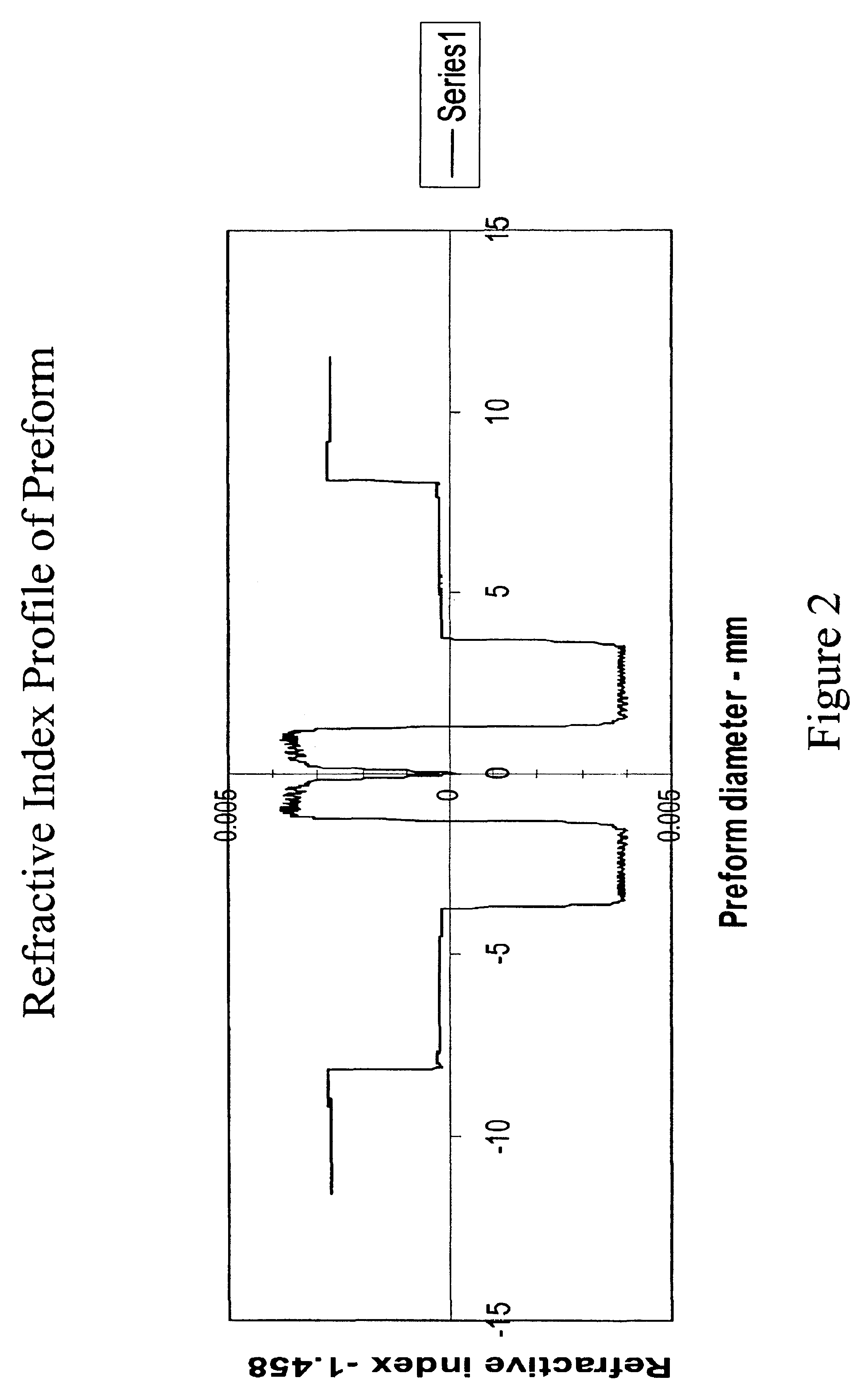Dual-band bend tolerant optical waveguide
a bend-tolerant, optical waveguide technology, applied in the direction of optical waveguide light guides, optical fibres with multi-layer cores/claddings, instruments, etc., can solve the problems of large splice losses, limited first fiber optic telecommunication systems, and inability to adjust the mfd of the two fiber ends by high temperature diffusion of core dopants. , to achieve the effect of tight bend tolerance and minimal splice losses
- Summary
- Abstract
- Description
- Claims
- Application Information
AI Technical Summary
Benefits of technology
Problems solved by technology
Method used
Image
Examples
example 1
[0047]One exemplary embodiment of an optical fiber in accordance with the present invention has the following material composition:[0048]Core Low-lightly doped germanium silicate glass (2.5 mole % of GeO2)[0049]Inner cladding Phosphorus fluorosilicate (˜0.1 mole % P2O5 and 3.4 mole % F)[0050]Outer cladding Fused Silica (100 mole %)
[0051]A preform having the material composition described above was manufactured using the modified chemical deposition (MCVD) process using a 19×25 mm fused silica tube by first depositing 18 cladding layers with flows of 700, 100 and 110 standard cc / min of SiCl4, POCl3, and SiF4, respectively. This was followed by 10 core layers consisting of 164 and 92 standard cc / min of SiCl4 and GeCl4, respectively, followed by two collapse passes and one seal pass resulting in a preform diameter of 16.2 mm. Two overcollapses using 22×25 and 24×30 mm fused silica tubes were required to obtain a final preform diameter of 25.4 mm. This preform was then milled to a final...
example 2
[0066]A second sample of optical fiber having a similar design in accordance with the present invention was drawn and measured.
[0067]a.) clad / core diameter ratio is 2.4
[0068]b.) +Δ of 0.0014
[0069]c.) −Δ of −0.0028
[0070]d.) ΔTot of 0.0042
This design resulted in fiber with the following properties:
[0071]Cutoff wavelength=1225 nm
[0072]MFD @ 1300 nm=9.4 microns
[0073]MFD @ 1550 nm=10.4 microns
[0074]Bend loss (0.635 cm 90°)=<0.05 dB @ 1300 nm
[0075]Bend loss (0.635 cm 90°)=0.20 dB @ 1550 nm
[0076]Bend loss (0.635 cm 90°)=0.25 dB @ 1600 nm
[0077]Index delta values were taken from measurements done on the fiber preforms before fiber drawing. The measurements were done with a He—Ne laser at 633 nm. The refractive index of the outer cladding in these fibers is essentially the same as pure silica, which for calculation purposes was taken to be 1.458 at 633 nm.
example 3
[0078]The bend performance of an optical fiber in accordance with the present invention was compared with two simple, single wavelength matched clad, matched mode-field diameter designs.
[0079]
Bend performanceBend performanceat 0.95 cm. (3 / 8″)at 0.95 cm. (3 / 8″)Bend performance at90° bend at 130090° bend at 15500.635 cm. (¼″) 90° bendFibernmnmat 1550 nm“Volition” type 0.7 dB3 dBTF 45 fiberN / A0.06 dB (cutoff 1500 nm)0.50 dB (cutoff 1400 nm)
[0080]As may be seen in the above table, a Volition™-type single mode fiber, available from 3M Company, St. Paul, Minn., was found to give adequate performance at a 0.95 cm (⅜″) radius 90 degree bend (henceforth referred to as a 0.95 cm (⅜″) 90 bend) when operating at 1300 nm, however, the bend loss increased to 0.7 dB at 1550 nm. At the 0.635 cm (¼″) 90 bend conditions, 1550 nm bend loss increased to 3 dB, which is equivalent to losing half the light intensity.
[0081]Test fiber 45 (called TF 45 fiber) is a mode matched, matched clad fiber in accordan...
PUM
 Login to View More
Login to View More Abstract
Description
Claims
Application Information
 Login to View More
Login to View More - R&D
- Intellectual Property
- Life Sciences
- Materials
- Tech Scout
- Unparalleled Data Quality
- Higher Quality Content
- 60% Fewer Hallucinations
Browse by: Latest US Patents, China's latest patents, Technical Efficacy Thesaurus, Application Domain, Technology Topic, Popular Technical Reports.
© 2025 PatSnap. All rights reserved.Legal|Privacy policy|Modern Slavery Act Transparency Statement|Sitemap|About US| Contact US: help@patsnap.com



